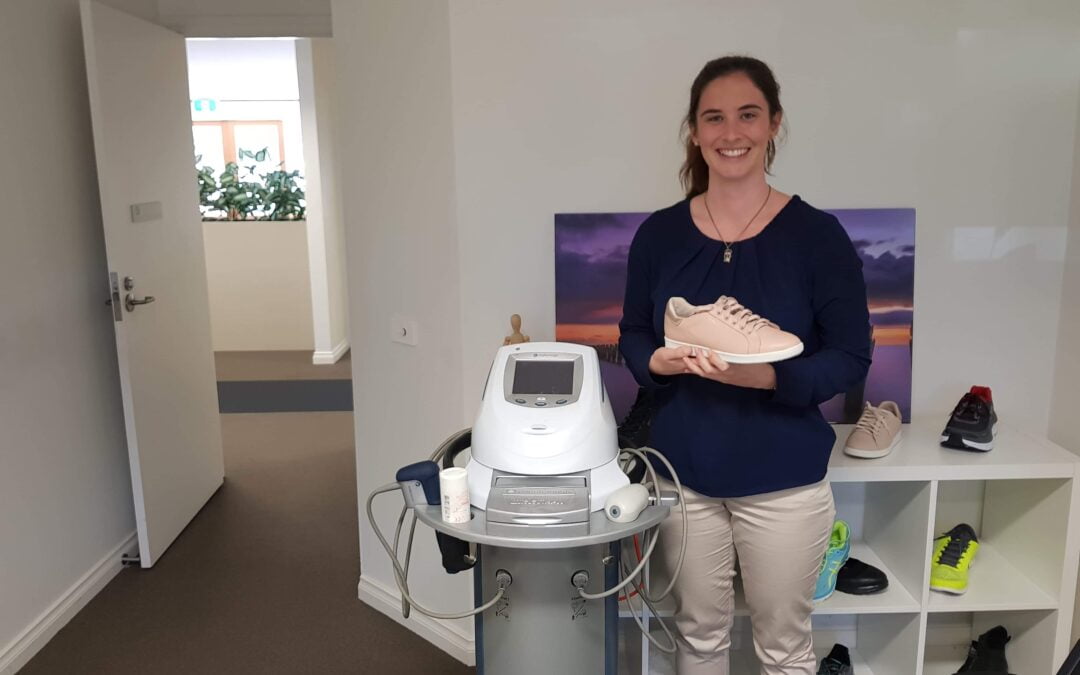Do you have plantar heel pain that has been present for over 3 months? Chances are you do not have Plantar Fasciitis but “Plantar Fasciosis”.
Heel pain is the most common injury we treat as Podiatrists. We find the term “plantar fasciitis” is used loosely for many injuries surrounding the heel, so it is imperative we diagnose correctly and treat accordingly.
Plantar Fasciitis: acute pain (weeks) within the heel or arch of the foot. It can be a result of trauma (eg. jumping from a height) or repetitive strain leading to over-use. It is characterised by inflammation of the plantar fascia attachment onto the heel.
Plantar Fasciosis: chronic pain (months) within the heel or arch of the foot, which results from untreated Plantar Fasciitis. It is characterised by degeneration and thickening of the plantar fascia at the attachment site of the calcaneus. The reason it can get to this stage is the causative factors of the injury are not addressed. The damage is then continued with particular activities leading to prolonged inflammation and the fascia is not able to repair and heal.
What not to do:
- Complete rest – this deconditions the fascia, which makes it harder to return to activity
- Think it is “only a niggle” and it will heal itself
- Continuing activities that aggravate the pain (jumping, sprinting, walking barefoot..)
- Take anti-inflammatories and not address the causative factors
- Get a cortisone injection and hope it goes away
What to do:
- See a Podiatrist! I am biased but the foot is a complicated structure and we treat injuries of the feet all day everyday.
Podiatry Treatment:
- Footwear – Work/day-to-day and exercise most important to get right
- Mobility – Using a lacrosse ball under the sole of the feet daily (can be tender to start)
- Strength – Simple exercises to help safely load and strengthen the muscles in your legs and feet
- Shockwave Therapy (pictured) – A non-invasive treatment which induces tissue repair and regeneration (reduces thickening). Shockwave increases healing factors to the area, improves flexibility and alleviates pain.
- Orthotics – Flexible custom inserts are sometimes required to reduce the load on the plantar fascia. Orthotics assist the plantar fascia to repair by keeping it in a stable position, reduces stress and can help prevent recurrence by increasing the efficiency of gait. Orthotics fit comfortably in good quality footwear.
- Imaging (if required) – Ultrasound or MRI
- Referral – A team approach is always the gold standard treatment for Plantar Fasciosis as we need to address all factors contributing to the injury. Physiotherapy, Osteopathy, Myotherapy or Exercise Physiology are common referrals within TSMC.
Key points:
- If you have pain in the heel or arch that doesn’t reduce after 2 weeks, get it seen to ASAP!
- Footwear is key when managing heel pain – you’ll be amazed at the difference it makes.
- Use a lacrosse or tennis ball under the sole of your foot twice daily. Slow and purposeful movements as your roll the ball from your heel to forefoot.
If you have any questions, please let me know, I am here to help!
Maddie McMahon
Podiatrist
